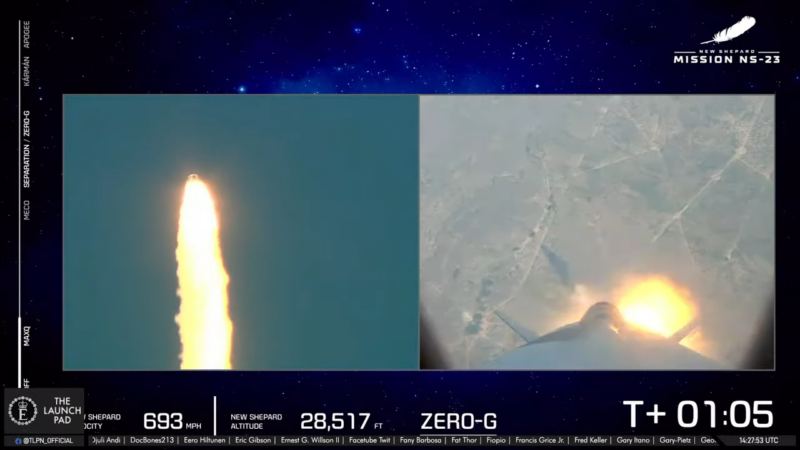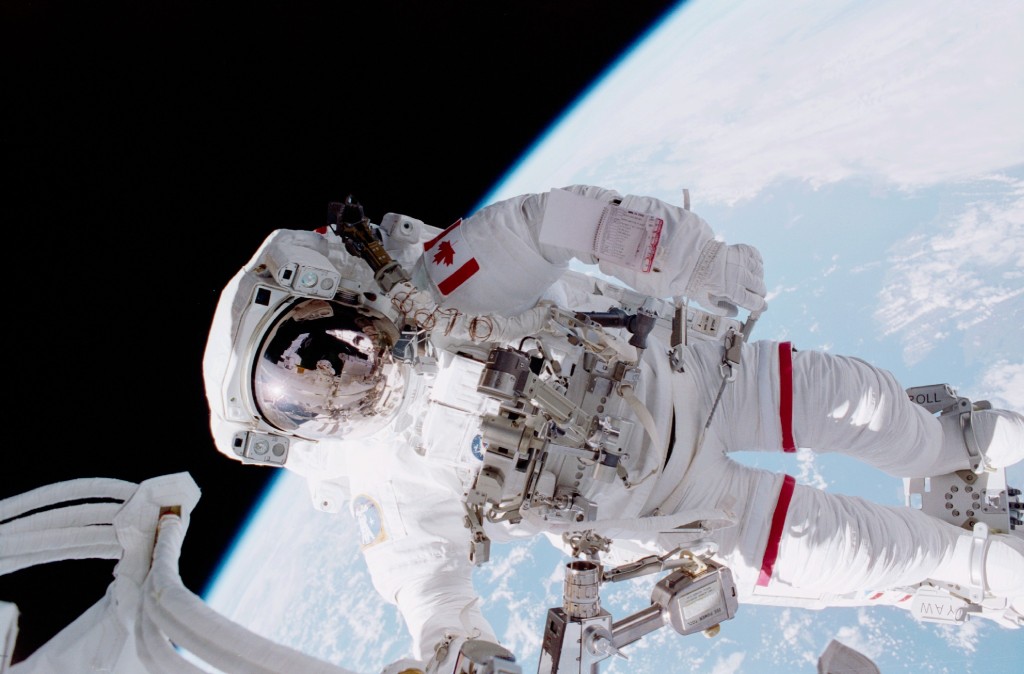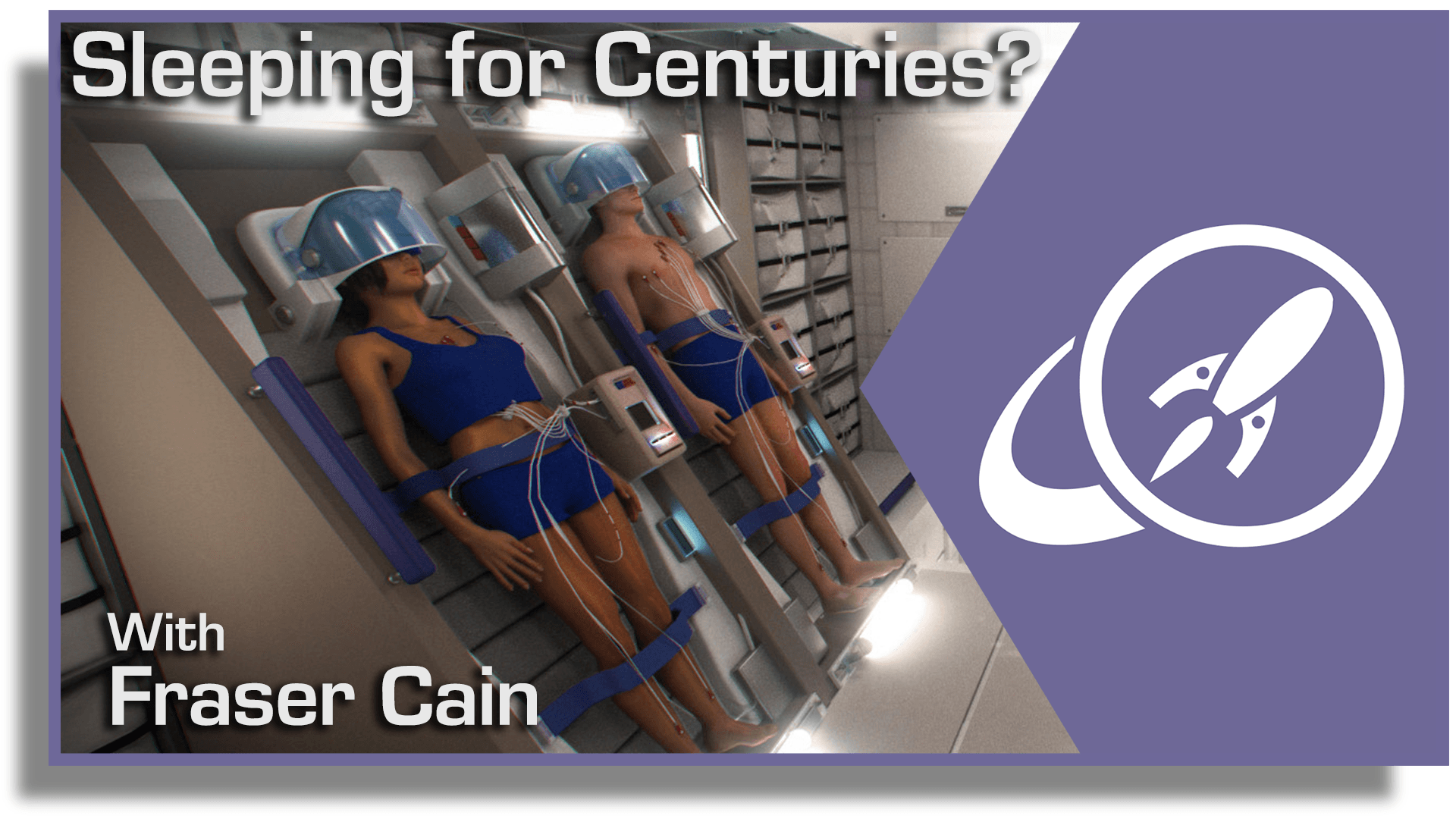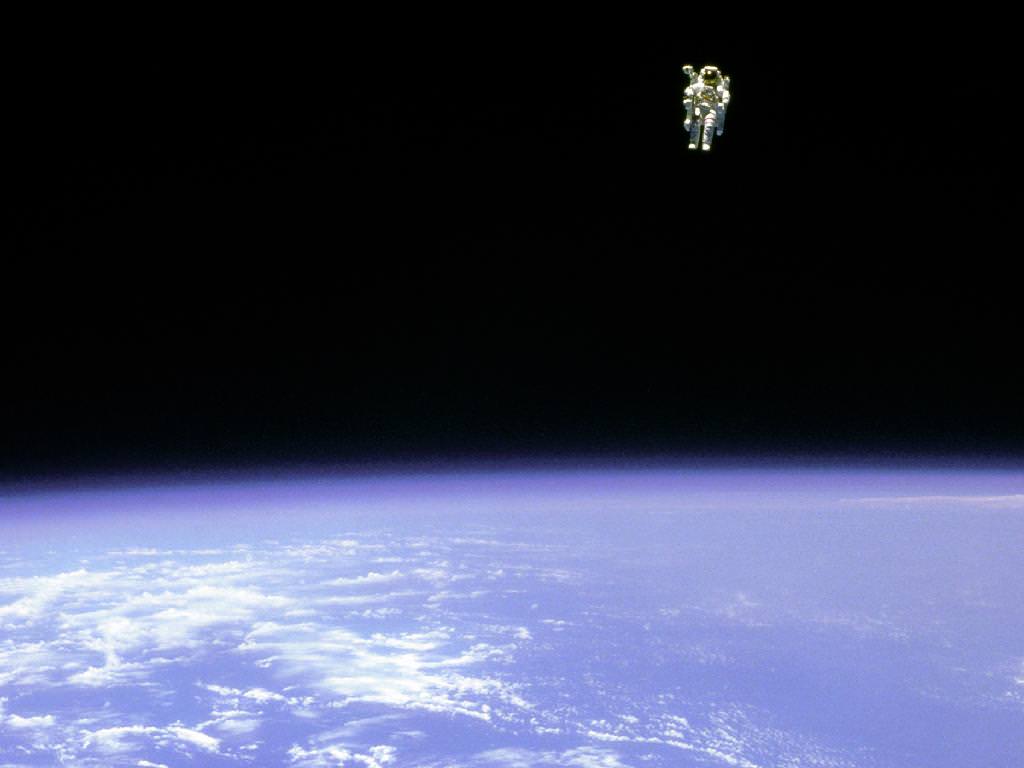If you were Captain of the first USS Enterprise, where would you go!? Humanity is on the cusp of reaching out among the stars, maybe not just yet, nor in our lifetimes but it is just around the corner cosmologically speaking. A new paper explores the new technology that could make it a reality but also carefully considers the ethical aspects. Before we make the first journeys we need to be clear about the ethical considerations too so that our exploration is sustainable and responsible.
Continue reading “The Cosmos is Waiting for us to Explore. But we Should Choose our Path Wisely.”A New Shepard Exploded. Fortunately, There Wasn’t Anyone on Board
On September 12, Blue Origin New Shepard mission, NS-23, failed just over one minute into an uncrewed flight, forcing the escape system to eject its New Shepard upper stage capsule, which landed safely near the launch site. Several science experiments were being carried onboard with the original flight plan calling for the capsule to reach an altitude of a little more than 60 miles, which is internationally acknowledged as the edge of space. While the flight was uncrewed and the capsule made a successful soft landing after ejecting, the scenario could have been far more ill-favored if the flight had been crewed with tourists.
Continue reading “A New Shepard Exploded. Fortunately, There Wasn’t Anyone on Board”Scientists Have Developed a Way to Make Human Skin More Protected from Space Radiation
Earth is a radiation cocoon. Inside that cocoon, the atmosphere and the magnetosphere keep us mostly safe from the Sun’s radiaition. Some ultraviolet light gets through, and can damage us. But reasonable precautions like simply minimizing exposure can keep the Sun’s radiation at bay.
But space is a different matter altogether. Among the many hazards it poses to astronauts, ever-present radiation is one that needs a solution.
Now a team of researchers have developed a new biomaterial to protect astronauts.
Continue reading “Scientists Have Developed a Way to Make Human Skin More Protected from Space Radiation”New Ideas to Reduce Muscle Loss During Spaceflight

One of the obstacles to long space missions is the muscle loss that astronauts suffer from. It’s called atrophy, and NASA says that astronauts can lose up to 20% muscle mass during missions of only 5 to 11 days. This muscle loss affects what are called “anti-gravity muscles,” including calf muscles, the quadriceps and the muscles of the back and neck.
This muscle loss makes it hard for astronauts to complete their tasks, especially when missions to Mars happen. It can also be very dangerous to astronauts, because they’re weakened when they return to Earth. If there are problems during re-entry, and they need to perform any strenuous emergency procedures, that missing muscle could be the difference between life and death.
Continue reading “New Ideas to Reduce Muscle Loss During Spaceflight”Is Human Hibernation Possible? Going to Sleep for Long Duration Spaceflight
We’ve spent a few articles on Universe Today talking about just how difficult it’s going to be to travel to other stars. Sending tiny unmanned probes across the vast gulfs between stars is still mostly science fiction. But to send humans on that journey? That’s just a level of technology beyond comprehension.
For example, the nearest star is Proxima Centauri, located a mere 4.25 light years away. Just for comparison, the Voyager spacecraft, the most distant human objects ever built by humans, would need about 50,000 years to make that journey.
I don’t know about you, but I don’t anticipate living 50,000 years. No, we’re going to want to make the journey more quickly. But the problem, of course, is that going more quickly requires more energy, new forms of propulsion we’ve only starting to dream up. And if you go too quickly, mere grains of dust floating through space become incredibly dangerous.
Based on our current technology, it’s more likely that we’re going to have to take our time getting to another star.
And if you’re going to go the slower route, you’ve got a couple of options. Create a generational ship, so that successive generations of humans are born, live out their lives, and then die during the hundreds or even thousands of year long journey to another star.
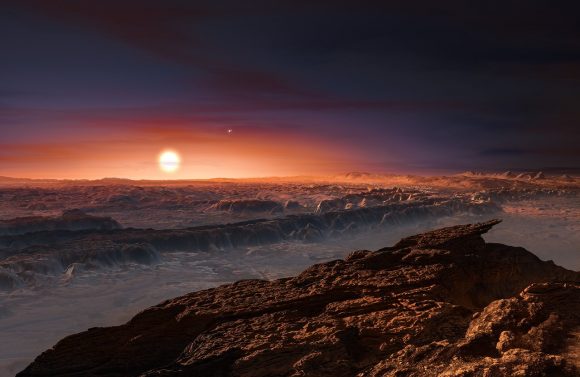
Imagine you’re one of the people destined to live and die, never reaching your destination. Especially when you look out your window and watch a warp ship zip past with all those happy tourists headed to Proxima Centauri, who were start enough to wait for warp drives to be invented.
No, you want to sleep for the journey to the nearest star, so that when you get there, it’s like no time passed. And even if warp drive did get invented while you were asleep, you didn’t have to see their smug tourist faces as they zipped past.
Is human hibernation possible? Can we do it long enough to survive a long-duration spaceflight journey and wake up again on the other side?
Before I get into this, we’re just going to have to assume that we never merge with our robot overlords, upload ourselves into the singularity, and effortlessly travel through space with our cybernetic bodies.
For some reason, that whole singularity thing never worked out, or the robots went on strike and refused to do our space exploration for us any more. And so, the job of space travel fell to us, the fragile, 80-year lifespanned mammals. Exploring the worlds within the Solar System and out to other stars, spreading humanity into the cosmos.
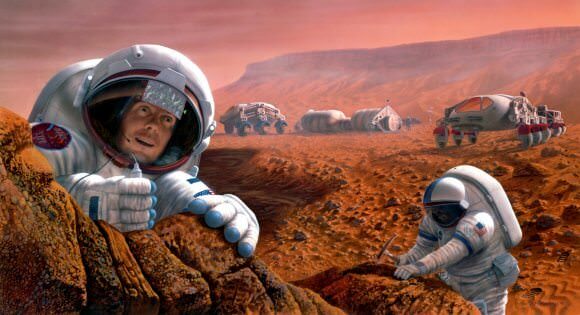
Come on, we know it’ll totally be the robots. But that’s not what the science fiction tells us, so let’s dig into it.
We see animals, and especially mammals hibernating all the time in nature. In order to be able survive over a harsh winter, animals are capable of slowing their heart rate down to just a few beats a minute. They don’t need to eat or drink, surviving on their fat stores for months at a time until food returns.
It’s not just bears and rodents that can do it, by the way, there are actually a couple of primates, including the fat-tailed dwarf lemur from Madagascar. That’s not too far away on the old family tree, so there might be hope for human hibernation after all.
In fact, medicine is already playing around with human hibernation to improve people’s chances to survive heart attacks and strokes. The current state of this technology is really promising.
They use a technique called therapeutic hypothermia, which lowers the temperature of a person by a few degrees. They can use ice packs or coolers, and doctors have even tried pumping a cooled saline solution through the circulatory system. With the lowered temperature, a human’s metabolism decreases and they fall unconscious into a torpor.
But the trick is to not make them so unconscious that they die. It’s a fine line.
The results have been pretty amazing. People have been kept in this torpor state for up to 14 days, going through multiple cycles.
The therapeutic use of this torpor is still under research, and doctors are learning if it’s helpful for people with heart attacks, strokes or even the progression of diseases like cancer. They’re also trying to figure out if there are any downsides, but so far, there don’t seem to be any long-term problems with putting someone in this torpor state.
A few years ago, SpaceWorks Enterprises delivered a report to NASA on how they could use this therapeutic hypothermia for long duration spaceflight within the Solar System.
Currently, a trip to Mars takes about 6-9 months. And during that time, the human passengers are going to be using up precious air, water and food. But in this torpor state, SpaceWorks estimates that the crew will a reduction in their metabolic rate of 50 to 70%. Less metabolism, less resources needed. Less cargo that needs to be sent to Mars.
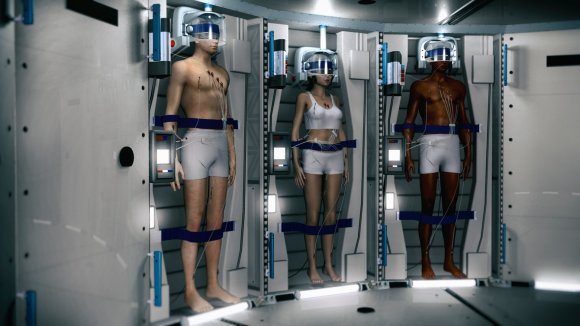
The astronauts wouldn’t need to move around, so you could keep them nice and snug in little pods for the journey. And they wouldn’t get into fights with each other, after 6-9 months of nothing but day after day of spaceflight.
We know that weightlessness has a negative effect on the body, like loss of bone mass and atrophy of muscles. Normally astronauts exercise for hours every day to counteract the negative effects of the reduced gravity. But SpaceWorks thinks it would be more effective to just put the astronauts into a rotating module and let artificial gravity do the work of maintaining their conditioning.
They envision a module that’s 4 metres high and 8 metres wide. If you spin the habitat at 20 revolutions per minute, you give the crew the equivalent of Earth gravity. Go at only 11.8 RPM and it’ll feel like Mars gravity. Down to 7.8 and it’s lunar gravity.
Normally spinning that fast in a habitat that small would be extremely uncomfortable as the crew would experience different forces at different parts of their body. But remember, they’ll be in a state of torpor, so they really won’t care.
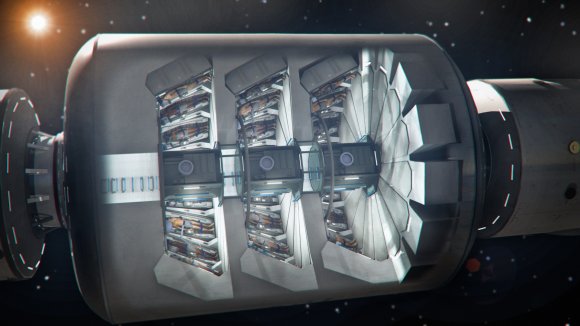
Current plans for sending colonists to Mars would require 40 ton habitats to support 6 people on the trip. But according to SpaceWorks, you could reduce the weight down to 15 tons if you just let them sleep their way through the journey. And the savings get even better with more astronauts.
The crew probably wouldn’t all sleep for the entire journey. Instead, they’d sleep in shifts for a few weeks. Taking turns to wake up, check on the status of the spacecraft and crew before returning to their cryosleep caskets.
What’s the status of this now? NASA funded stage 1 of the SpaceWorks proposal, and in July, 2016 NASA moved forward with Phase 2 of the project, which will further investigate this technique for Mars missions, and how it could be used even farther out in the Solar System.
Elon Musk should be interested in seeing their designs for a 100-person module for sending colonists to Mars.
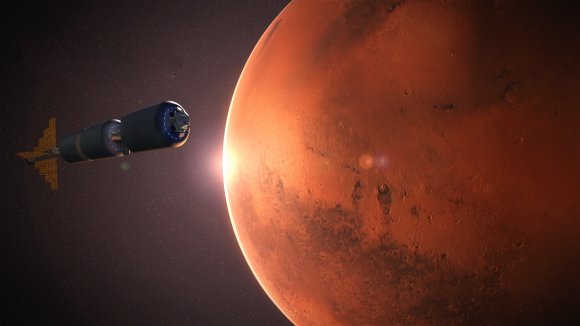
In addition, the European Space Agency has also been investigating human hibernation, and a possible way to enable long-duration spaceflight. They have plans to test out the technology on various non-hibernating mammals, like pigs. If their results are positive, we might see the Europeans pushing this technology forward.
Can we go further, putting people to sleep for decades and maybe even the centuries it would take to travel between the stars?
Right now, the answer is no. We don’t have any technology at our disposal that could do this. We know that microbial life can be frozen for hundreds of years. Right now there are parts of Siberia unfreezing after centuries of permafrost, awakening ancient microbes, viruses, plants and even animals. But nothing on the scale of human beings.
When humans freeze, ice crystals form in our cells, rupturing them permanently. There is one line of research that offers some hope: cryogenics. This process replaces the fluids of the human body with an antifreeze agent which doesn’t form the same destructive crystals.
Scientists have successfully frozen and then unfrozen 50-milliliters (almost a quarter cup) of tissue without any damage.
In the next few years, we’ll probably see this technology expanded to preserving organs for transplant, and eventually entire bodies, and maybe even humans. Then this science fiction idea might actually turn into reality. We’ll finally be able to sleep our way between the stars.
Designing The Hanging Gardens Of Mars
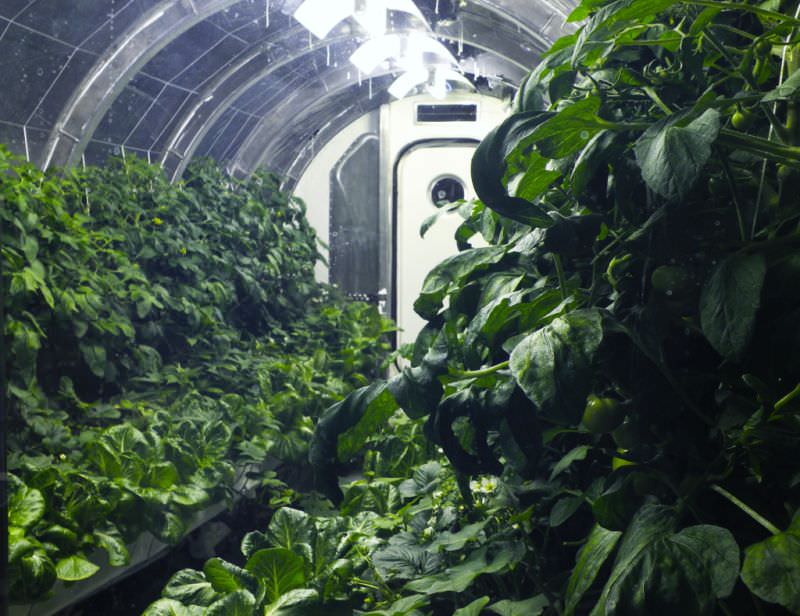
NASA is all about solving challenges, and the goal of having a prolonged presence in space, or a colony on Mars or some other world, is full of challenges, including the necessity of growing food. Scientists at Kennedy Advanced Life Support Research are working on the Prototype Lunar/Mars Greenhouse Project to try and meet that challenge.
The Prototype Lunar/Mars Greenhouse Project (PLMGP) is all about growing vegetables for astronauts during extended stays on the Moon, on Mars, or anywhere they can’t be resupplied from Earth. Beyond growing food, the Project aims to understand how food-growing systems can also be a part of life-support systems.
“The approach uses plants to scrub carbon dioxide, while providing food and oxygen.” – Dr. Ray Wheeler
“We’re working with a team of scientists, engineers and small businesses at the University of Arizona to develop a closed-loop system. The approach uses plants to scrub carbon dioxide, while providing food and oxygen,” said Dr. Ray Wheeler, lead scientist in Kennedy Advanced Life Support Research.
The prototype itself is an inflatable, deployable system that researchers call a bioregenerative life support system. As crops are grown, the system recycles, water, recycles waste, and revitalizes the air.
The system is hydroponic, so no soil is needed. Water that is either brought along on missions or gathered in situ—on the Moon or at Mars for example—is enriched with nutrient salts, and flows continuously through plant root systems. Air in the system is recycled too. Astronauts exhale carbon dioxide, which plants absorb. Through photosynthesis, the plants produce oxygen for the astronauts.
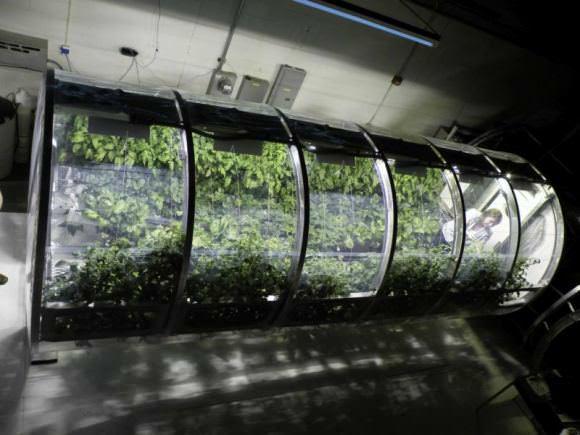
“We’re mimicking what the plants would have if they were on Earth and make use of these processes for life support,” said Dr. Gene Giacomelli, director of the Controlled Environment Agriculture Center at the University of Arizona. “The entire system of the lunar greenhouse does represent, in a small way, the biological systems that are here on Earth.”
“The entire system of the lunar greenhouse does represent, in a small way, the biological systems that are here on Earth.” – Dr. Gene Giacomelli
A key part of a system like this is knowing what astronauts will have to bring with them, and what resources they can find at their destination. This includes which type of plants and seeds will be needed, as well as how much water might be available once astronauts reach their destination. Methods of extracting water on Mars or the Moon are also being researched and developed.
Even if the necessary water can be found in situ on Mars and the Moon, that hardly means those are easy places to grow food. Astronauts have to be protected from radiation, and so will crops. These greenhouse chambers would have to buried underground, which means specialized lighting systems are also required.
“We’ve been successful in using electric LED (light emitting diode) lighting to grow plants,” Dr. Wheeler said. “We also have tested hybrids using both natural and artificial lighting.” Solar light could be captured with light concentrators that track the sun and then convey the light to the chamber using fiber optic bundles.
These systems are not NASA’s first experience at growing crops in space. Experiments aboard the International Space Station (ISS) have been an important part of the research into crop production in non-terrestrial environments. The Veggie Plant Growth System was NASA’s first attempt, and astronauts successfully harvested lettuce from that system.
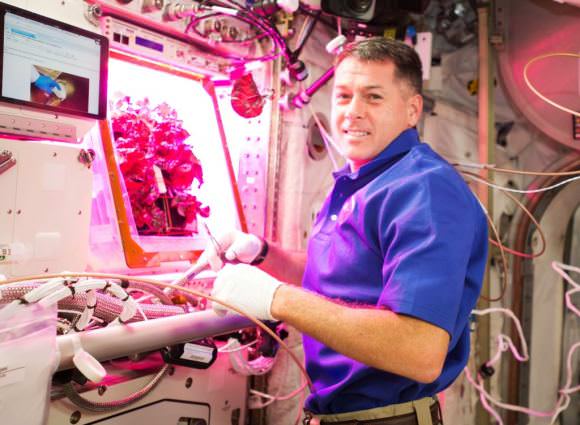
Earth has well-established systems for sustaining life, and this project is all about taking some of that to distant destinations in space.
“I think it’s interesting to consider that we’re taking our terrestrial companions with us,” Wheeler said. “While there may be ways to engineer around it in terms of stowage and resupply, it wouldn’t be as sustainable. The greenhouses provide a more autonomous approach to long-term exploration on the moon, Mars and beyond.”
Preleminary Results In NASA Twins Study Released
In 1996, something remarkable happened at NASA. Twin brothers Mark and Scott Kelly were accepted into NASA; Mark as a shuttle pilot, and Scott into technical operations on the ground, at least initially. Eventually, both brothers became astronauts. They are the only siblings to have both been in space.
Whether it was intentional or not, having twin brothers gave NASA an important opportunity. They could use one twin as a control group, and send the other on a prolonged mission into space. That allowed NASA to carry out important research on the effects of space travel on the human body.
In March 2016, Scott Kelly returned from a year long (340 days) mission aboard the International Space Station, while his brother Mark stayed on Earth. Genetic samples were taken from each brother before and after Scott’s time aboard the ISS. Now, NASA has released the preliminary results of this unprecedented opportunity.
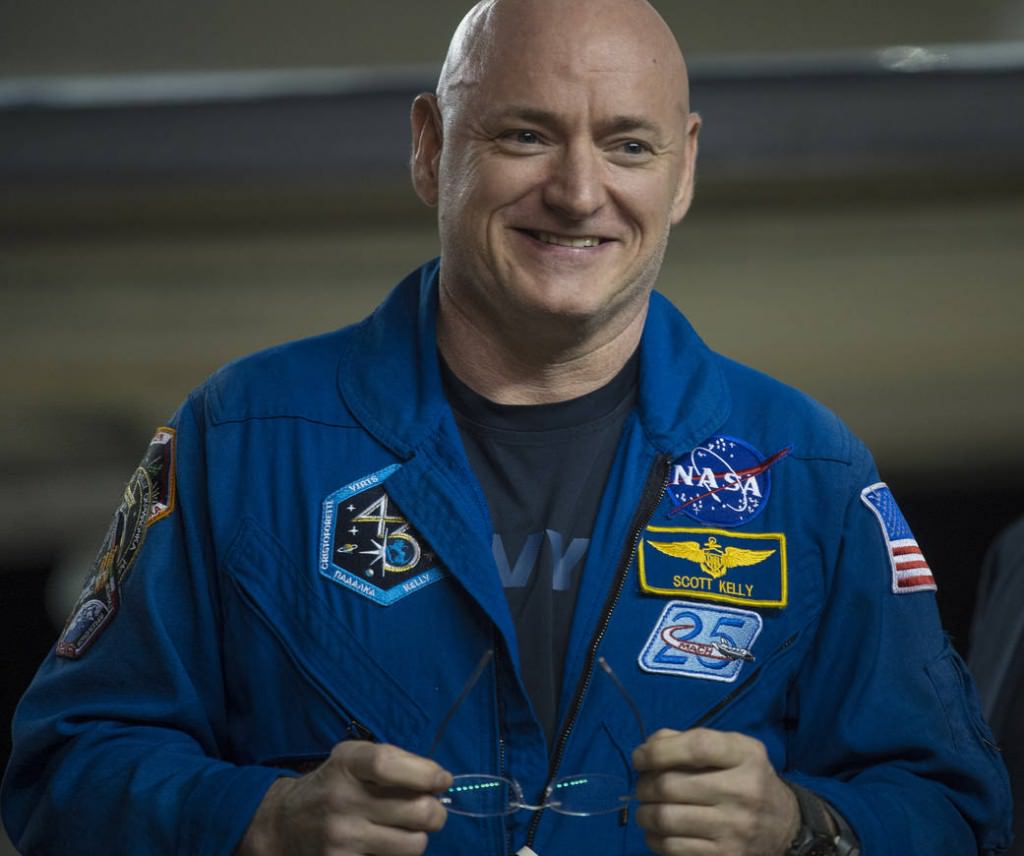
NASA’s Human Research Program did the study, and the results were released at their Investigator’s Workshop on the week of January 23rd. The theme of that workshop was A New Dawn: Enabling Human Space Exploration. Though the studies are on-going, these initial results are interesting.
Omics
Mike Snyder, who is the Integrated Omics investigator, reported his findings. He found an altered level of lipids in Scott, the flight twin, which indicates inflammation. He also found increased 3-indolepropionic (IPA) in Mark, the ground twin. IPA is a potential brain antioxidant therapeutic, and also helps maintain normal insulin levels, to stabilize blood sugar after meals.
Telomeres and Telomerase
Telomeres and Telomerase are part of the chromosomal system in the human body. Susan Bailey reported that for Scott, the flight twin, the length of his white blood cell’s telomeres increased while in space. Typically, they decrease as a person ages. Once on Earth, they began to shorten again.
Telomerase, an enzyme that repairs telomeres, increased in both brothers in November, which could be related to a stressful family event at that time.
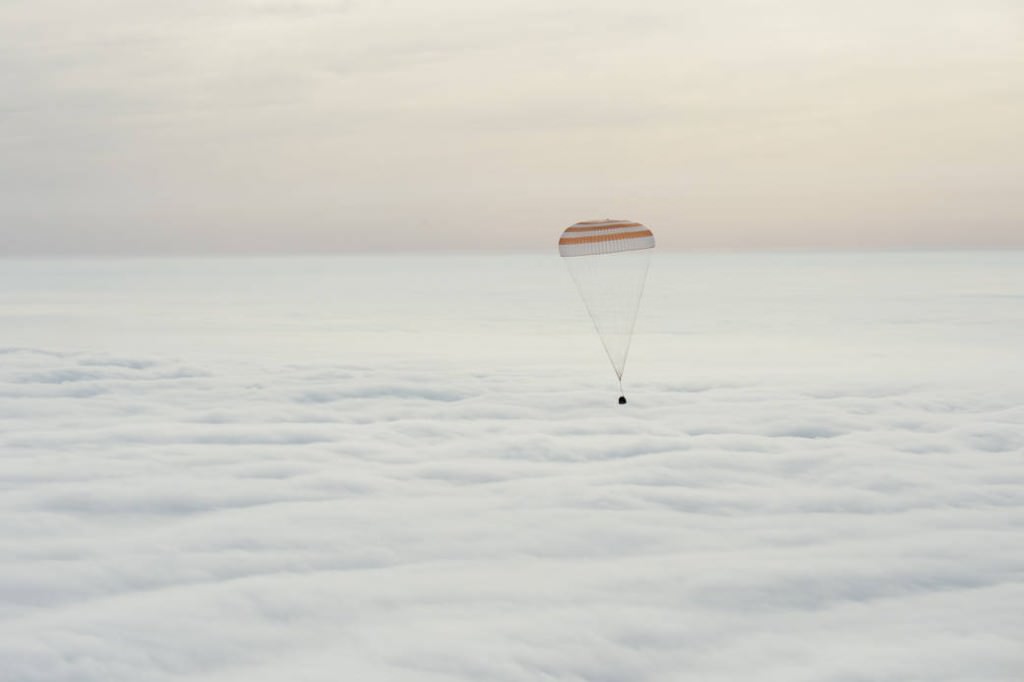
Cognitive Performance in Spaceflight
Mathias Basner is studying Cognitive Performance in Spaceflight, especially the difference in cognition between a 12-month mission and a six-month mission. Though he found a slight decrease in speed and accuracy after the mission, he found no real difference in cognition between 6 month and 12 month missions.
Biochemistry
Scott Smith’s investigation into biochemistry showed a decrease in bone density during the second half of Scott’s mission. Scott also had increased levels of a biochemical marker for inflammation once he returned to Earth.
Microbiome in the Gastro-Intestinal Tract
Fred Turek reported preliminary results of his investigation into the bacteria in the GI (microbiome) tract that help digestion. There were many differences in the twins’ biomes, but that was expected because of their different diets and environments. There were interesting differences in Scott’s biome between his time in space and his time on the ground. The ratio between two dominant bacterial groups shifted during his flight time compared to his ground time.
Immunome Studies
Emmanuel Mignot investigated changes in the bodies of both twins before and after a flu vaccine was given. Both twins showed increased levels of T-cell receptors after the vaccine, which was the expected immune response.
Genome Sequencing
Chris Mason is performing Genome Sequencing on the DNA and RNA contained within the twins’ white blood cells with his investigation. RNA sequencing showed that over 200,000 RNA molecules were expressed differently between the twins. Mason will look closer to see if a “space gene” could have been activated while Scott was in space.
Epigenomics
Andy Feinberg studies how the environment regulates our gene expression, which is known as epigenomics. Scott’s white blood cell DNA showed decreased levels of chemical modification while in flight, and a return to normal once back on Earth. The same level in Mark (the ground twin) increased midway through the study, but then returned to normal. There was variability between the twins, called epigenetic noise. This noise was higher in Scott during his spaceflight, and returned to baseline levels once back on Earth. This could indicate that some genes are more sensitive to the changing environment of spaceflight than others.
There’s a lot more research required to truly understand these results. Once they’re looked at in coordination with other physiological, psychological, and technological investigations, the picture will become clearer. Later in 2017, there will be a joint publication of further results, as well as individual research papers.
NASA’s goal is to make space travel safer for astronauts, and to make missions more effective and efficient. With all the talk of missions to Mars in the next decade, these results are arriving at the perfect time.
What are CubeSats?
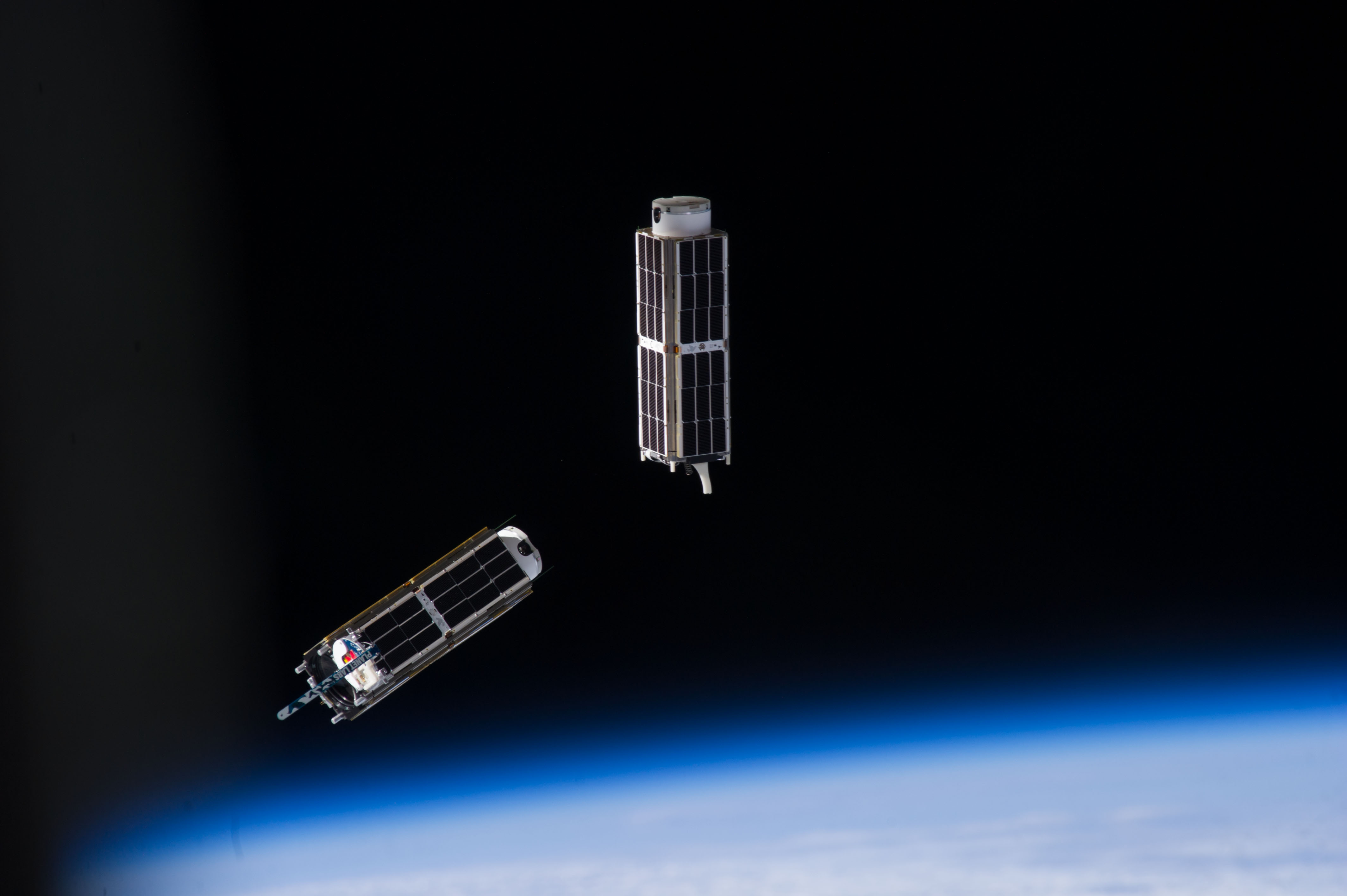
One of the defining characteristics of the modern era of space exploration is the open nature of it. In the past, space was a frontier that was accessible only to two federal space agencies – NASA and the Soviet space program. But thanks to the emergence of new technologies and cost-cutting measures, the private sector is now capable of providing their own launch services.
In addition, academic institutions and small countries are now capable of building their own satellites for the purposes of conducting atmospheric research, making observations of Earth, and testing new space technologies. It’s what is known as the CubeSat, a miniaturized satellite that is allowing for cost-effective space research.
Structure and Design:
Also known as nanosatellites, CubeSats are built to standard dimensions of 10 x 10 x 11 cm (1 U) and are shaped like cubes (hence the name). They are scalable, coming in versions that measure 1U, 2Us, 3Us, or 6Us on a side, and typically weigh less than 1.33 kg (3 lbs) per U. CubSats of 3Us or more are the largest, being composed of three units stacked lengthwise with a cylinder encasing them all.
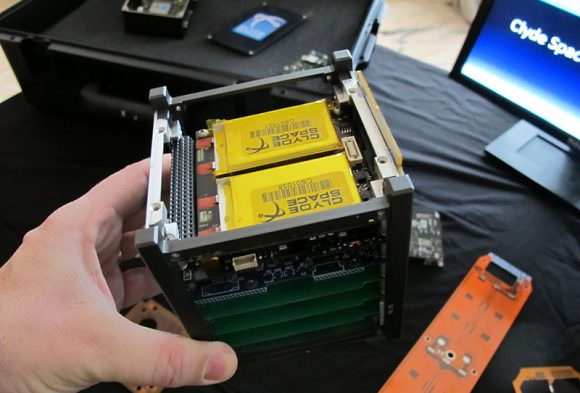
In recent years larger CubeSat platforms have been proposed, which include a 12U model (20 x 20 x 30 cm or 24 x 24 x 36 cm), that would extend the capabilities of CubeSats beyond academic research and testing new technologies, incorporating more complex science and national defense goals.
The main reason for miniaturizing satellites is to reduce the cost of deployment, and because they can be deployed in the excess capacity of a launch vehicle. This reduces the risks associated with missions where additional cargo has to be piggybacked to the launcher, and also allows for cargo changes on short notice.
They can also be made using commercial off-the-shelf (COTS) electronics components, which makes them comparably easy to create. Since CubeSats missions are often made to very Low Earth Orbits (LEO), and experience atmospheric reentry after just days or weeks, radiation can largely be ignored and standard consumer-grade electronics may be used.
CubeSats are built from four specific types of aluminum alloy to ensure that they have the same coefficient of thermal expansion as the launch vehicle. The satellites are also coated with a protective oxide layer along any surface that comes into contact with the launch vehicle to prevent them from being cold welded into place by extreme stress.
Components:
CubeSats often carry multiple on-board computers for the sake of carrying out research, as well providing for attitude control, thrusters, and communications. Typically, other on-board computers are included to ensure that the main computer is not overburdened by multiple data streams, but all other on-board computers must be capable of interfacing with it.
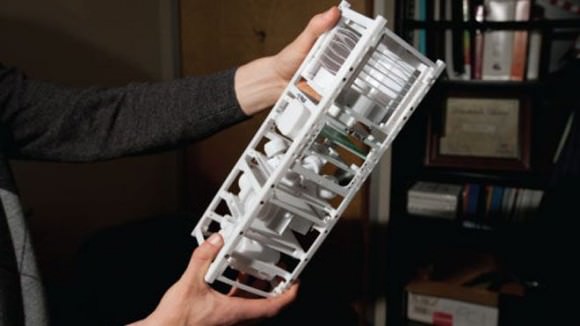
Typically, a primary computer is responsible for delegating tasks to other computers – such as attitude control, calculations for orbital maneuvers, and scheduling tasks. Still, the primary computer may be used for payload-related tasks, like image processing, data analysis, and data compression.
Miniaturized components provide attitude control, usually consisting of reaction wheels, magnetorquers, thrusters, star trackers, Sun and Earth sensors, angular rate sensors, and GPS receivers and antennas. Many of these systems are often used in combination in order to compensate for shortcomings, and to provide levels of redundancy.
Sun and star sensors are used to provide directional pointing, while sensing the Earth and its horizon is essential for conducting Earth and atmospheric studies. Sun sensors are also useful in ensuring that the CubsSat is able to maximize its access to solar energy, which is the primary means of powering a CubeSat – where solar panels are incorporated into the satellites outer casing.
Meanwhile, propulsion can come in a number of forms, all of which involve miniaturized thrusters providing small amounts of specific impulse. Satellites are also subject to radiative heating from the Sun, Earth, and reflected sunlight, not to mention the heat generated by their components.
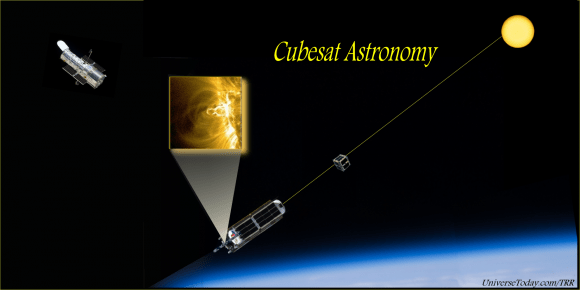
As such, CubeSat’s also come with insulation layers and heaters to ensure that their components do not exceed their temperature ranges, and that excess heat can be dissipated. Temperature sensors are often included to monitor for dangerous temperature increases or drops.
For communications, CubeSat’s can rely on antennae that work in the VHF, UHF, or L-, S-, C- and X-bands. These are mostly limited to 2W of power due to the CubeSat’s small size and limited capacity. They can be helical, dipole, or monodirection monopole antennas, though more sophisticated models are being developed.
Propulsion:
CubeSats rely on many different methods of propulsion, which has in turn led to advancements in many technologies. The most common methods includes cold gas, chemical, electrical propulsion, and solar sails. A cold gas thruster relies on inert gas (like nitrogen) which is stored in a tank and released through a nozzle to generate thrust.
As propulsion methods go, it is the simplest and most useful system a CubeSat can use. It is also one of the safest too, since most cold gases are neither volatile nor corrosive. However, they have limited performance and cannot achieve high impulse maneuvers. Hence why they are generally used in attitude control systems, and not as main thrusters.
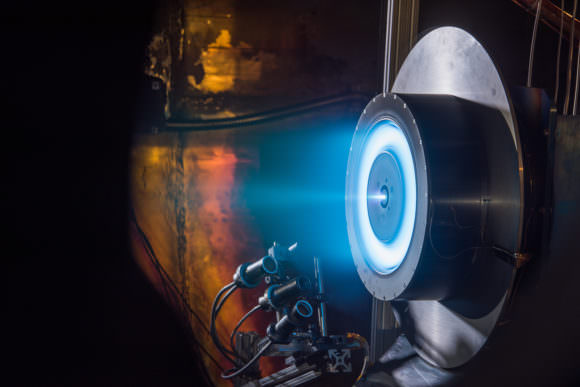
Chemical propulsion systems rely on chemical reactions to produce high-pressure, high-temperature gas which is then directed through a nozzle to create thrust. They can be liquid, solid, or a hybrid, and usually come down to the combination of chemicals combined with a catalysts or an oxidizer. These thrusters are simple (and can therefore be miniaturized easily), have low power requirements, and are very reliable.
Electric propulsion relies on electrical energy to accelerate charged particles to high speeds – aka. Hall-effect thrusters, ion thrusters, pulsed plasma thrusters, etc. This method is beneficial since it combines high specific-impulse with high-efficiency, and the components can be easily miniaturized. A disadvantage is that they require additional power, which means either larger solar cells, larger batteries, and more complex power systems.
Solar sails are also used as a method for propulsion, which is beneficial because it requires no propellant. Solar sails can also be scaled to the CubSat’s own dimensions, and the satellite’s small mass results in the greater acceleration for a given solar sail’s area.
However, solar sails still need to be quite large compared to the satellite, which makes mechanical complexity an added source of potential failure. At this time, few CubeSats have employed a solar sail, but it remains an area of potential development since it is the only method that needs no propellant or involves hazardous materials.
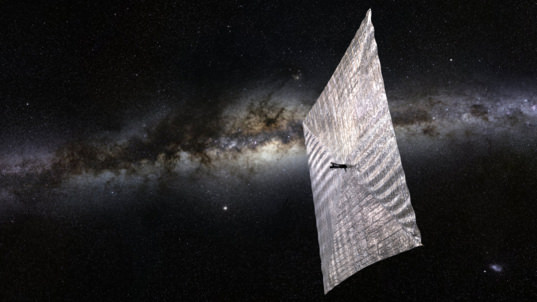
Because the thrusters are miniaturized, they create several technical challenges and limitations. For instance, thrust vectoring (i.e. gimbals) is impossible with smaller thrusters. As such, vectoring must instead be achieved by using multiple nozzles to thrust asymmetrically or using actuated components to change the center of mass relative to the CubeSat’s geometry.
History:
Beginning in 1999, California Polytechnic State University and Stanford University developed the CubeSat specifications to help universities worldwide to perform space science and exploration. The term “CubeSat” was coined to denote nano-satellites that adhere to the standards described in the CubeSat design specifications.
These were laid out by aerospace engineering professor Jordi Puig-Suari and Bob Twiggs, from the Department of Aeronautics & Astronautics at Stanford University. It has since grown to become an international partnership of over 40 institutes that are developing nano-satellites containing scientific payloads.
Initially, despite their small size, academic institutions were limited in that they were forced to wait, sometimes years, for a launch opportunity. This was remedied to an extent by the development of the Poly-PicoSatellite Orbital Deployer (otherwise known as the P-POD), by California Polytechnic. P-PODs are mounted to a launch vehicle and carry CubeSats into orbit and deploy them once the proper signal is received from the launch vehicle.
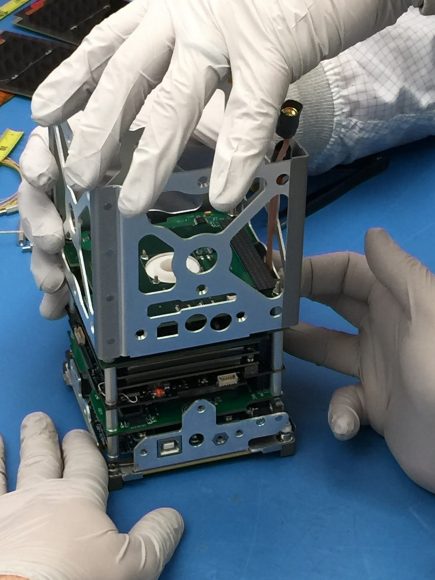
The purpose of this, according to JordiPuig-Suari, was “to reduce the satellite development time to the time frame of a college student’s career and leverage launch opportunities with a large number of satellites.” In short, P-PODs ensure that many CubeSats can be launched at any given time.
Several companies have built CubeSats, including large-satellite-maker Boeing. However, the majority of development comes from academia, with a mixed record of successfully orbited CubeSats and failed missions. Since their inception, CubeSats have been used for countless applications.
For example, they have been used to deploy Automatic Identification Systems (AIS) to monitor marine vessels, deploy Earth remote sensors, to test the long term viability of space tethers, as well as conducting biological and radiological experiments.
Within the academic and scientific community, these results are shared and resources are made available by communicating directly with other developers and attending CubeSat workshops. In addition, the CubeSat program benefits private firms and governments by providing a low-cost way of flying payloads in space.
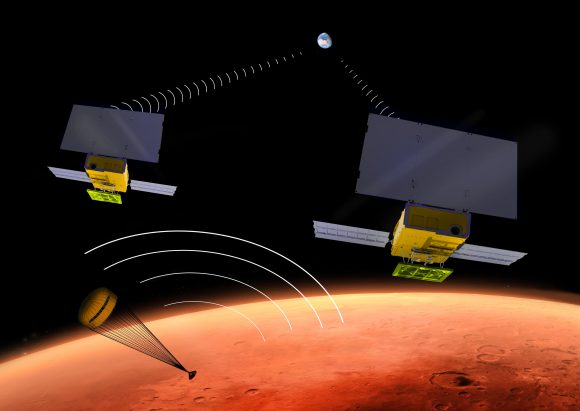
In 2010, NASA created the “CubeSat Launch Initiative“, which aims to provide launch services for educational institutions and non-profit organizations so they can get their CubeSats into space. In 2015, NASA initiated its Cube Quest Challenge as part of their Centennial Challenges Programs.
With a prize purse of $5 million, this incentive-competition aimed to foster the creation of small satellites capable of operating beyond low Earth orbit – specifically in lunar orbit or deep space. At the end of the competition, up to three teams will be selected to launch their CubeSat design aboard the SLS-EM1 mission in 2018.
NASA’s InSight lander mission (scheduled to launch in 2018), will also include two CubeSats. These will conduct a flyby of Mars and provide additional relay communications to Earth during the lander’s entry and landing.
Designated Mars Cube One (MarCO), this experimental 6U-sized CubeSat will will be the first deep-space mission to rely on CubeSat technology. It will use a high-gain, flat-paneled X-band antenna to transmit data to NASA’s Mars Reconnaissance Orbiter (MRO) – which will then relay it to Earth.
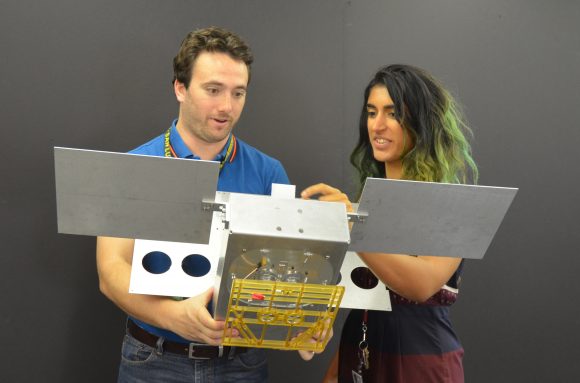
Making space systems smaller and more affordable is one of the hallmarks of the era of renewed space exploration. It’s also one of the main reasons the NewSpace industry has been growing by leaps and bounds in recent years. And with greater levels of participation, we are seeing greater returns when it comes to research, development and exploration.
We have written many articles about CubeSat for Universe Today. Here’s Planetary Society to Launch Three Separate Solar Sails, First Interplanetary CubeSats to Launch on NASA’s 2016 InSight Mars Lander, Making CubeSats do Astronomy, What Can You Do With a Cubesat?, These Cubesats Could Use Plasma Thrusters to Leave Our Solar System.
If you’d like more info on the CubeSat, check out CubeSat’s official homepage.
We’ve recorded an episode of Astronomy Cast all about the Space Shuttle. Listen here, Episode 127: The US Space Shuttle.
Sources:
Hawking Supports Tiny Spacecraft To Alpha Centauri
We know that Earth will die.
Even if we beat global warming, and survive long enough to face and survive the next ice age, Earth will still die. Even if we build a peaceful civilization, protect the planet from asteroids, fight off mutant plagues and whatever else comes our way, life on Earth will die. No matter what we do, the Sun will reach the end of its life, and render Earth uninhabitable.
So reaching for the stars is imperative. What sounds unrealistic to a great many people is a matter of practicality for people knowledgeable about space. To survive, we must have more than Earth.
A project launched by billionaire Yuri Milner, and backed by Mark Zuckerberg, intends to send tiny spacecraft to our nearest stellar neighbour, the Alpha Centauri system. With an expert group assembled to gauge the feasibility, and with the support of eminent cosmologist Stephen Hawking, this idea is gaining traction.
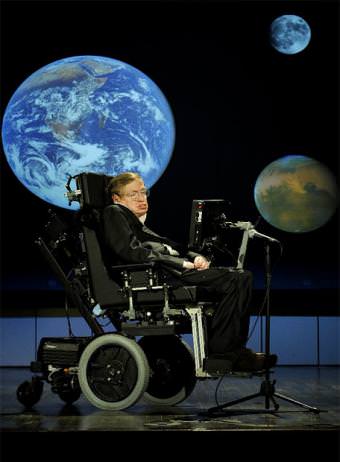
The distance to the Centauri system is enormous: 4.3 light years, or 1.34 parsecs. The project plans to use lasers to propel the craft, which should mean the travel time would be approximately 30 years, rather than the 30,000 year travel time that current technology restricts us to.
Of course, there are still many technological hurdles to overcome. The laser propulsion system itself is still only a nascent idea. But theoretically it’s pretty sound, and if it can be mastered, should be able to propel space vehicles at close to relativistic speeds.
There are other challenges, of course. The tiny craft will need robust solar sails as part of the propulsion system. And any instruments and cameras would have to be miniaturized, as would any communication equipment to send data back to Earth. But in case you haven’t been paying attention, humans have a pretty good track record of miniaturizing electronics.
Though the craft proposed are tiny, no larger than a microchip, getting them to the Alpha Centauri system is a huge step. Who knows what we’ll learn? But if we’re ever to explore another solar system, it has to start somewhere. And since astronomers think it’s possible that the Centauri system could have potentially habitable planets, it’s a great place to start.
Gender Generates Biological Challenges For Long Duration Spaceflight
Men and women look exactly the same when ensconced in a space suit. But female physiology is different from male physiology in significant ways. And those differences create challenges when those bodies have to endure long duration spaceflight, such as during proposed missions to Mars.
Some of the effects of spending a long time in space are well-known, and affect both genders. Exposure to microgravity creates most of these effects. With less gravity acting on the body, the spine lengthens, causing aches and pains. Lowered gravity also causes bone loss, as the skeletal system loses important minerals like nitrogen, calcium, and phosphorous. And the muscles atrophy, since they aren’t used as much.
Microgravity makes the body sense that it is carrying too much fluid in the chest and head, and the body tries to eliminate it. Astronauts feel less thirst, and over time the body’s fluid level decreases. With less fluid, the heart doesn’t have to work as hard. The heart’s a muscle, so it atrophies much like other muscles. The fluid level causes other changes too. Fluid accumulates in the face, causing “Puffy Face Syndrome.”
But some problems are specific to gender, and Gregor Reid, PhD, and Camilla Urbaniak, PhD Candidate at the Shulich School of Medicine and Dentistry are focusing on one fascinating and important area: the human microbiome. Female and male microbiomes are different, and they are affected by microgravity, and other aspects of space travel, in different ways.
The human microbiome is the trillions of microorganisms living on the human body and in the gut. They are important for digestion and nutrition, and also for the immune system. A healthy human being requires a healthy microbiome. If you’ve ever travelled to another part of the world, and had stomach problems from the food there, those can be caused by changes in your microbiome.
Research on astronauts shows that spending time in space changes different aspects of the microbe population in a human being. Some of these changes cause health complications when the microbes responsible for digestion and immunity are affected. Reid says that the microbe has to be understood as its own organ, and we need a better understanding of how to keep that organ healthy. Keeping the microbiome healthy will keep the astronaut healthy, and reduce the risk of disease.
After conducting a literature review, the two researchers suggested that astronauts should incorporate probiotics and fermented foods into their diet to boost the health of their microbiome. They think that astronauts should have access to probiotic bacteria that they can prepare food with. Urbaniak acknowledges that female astronauts don’t want to be limited to shorter duration space flights, and using probiotics to manipulate the microbiome of female astronauts will allow them to withstand longer voyages.
Reid and Urbaniak also highlight some other problems facing women in long distance space voyages. If a female astronaut is diagnosed with breast cancer, ovarian cancer, or a urinary tract infection during an extended journey in space, any treatment involving antibiotics would be problematic. The antibiotics themselves may work less effectively due to changes in the microbiome.
Research on male astronauts has already shown a decrease in beneficial microorganism in the gut, and in the nasal and oral pathways. Those decreases were noted in both long and short duration stays in space. The research also shows an increase in harmful microorganisms such as E. coli. and staphylococcus. But so far, the same research hasn’t been done on female astronauts.
It’s well understood that women and men have different microbial profiles, and that their microbiomes are different. But there’s a lot we still don’t know about the specifics. This is an important area of research for NASA. According to Urbaniak, though, previous studies of the human microbiome and its response to space travel have focused on male astronauts, not female astronauts. Reid and Urbaniak are hopeful that their work will start a conversation that results in a greater understanding of the effects of space travel on women.


